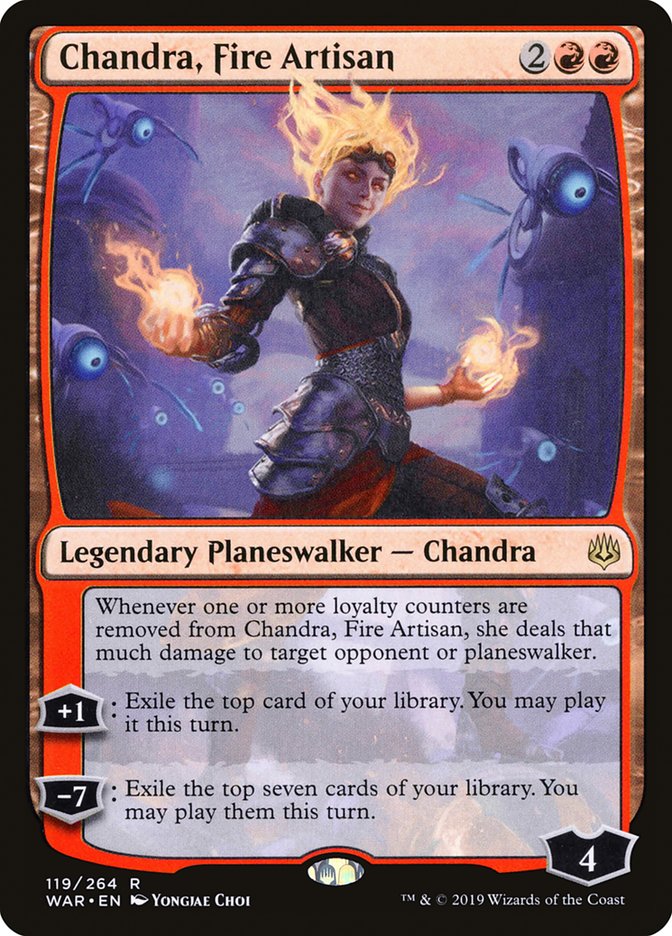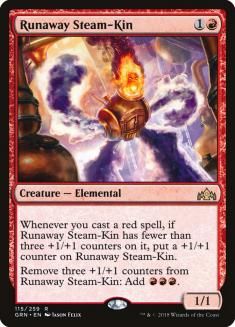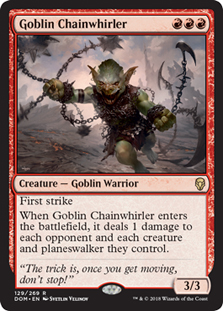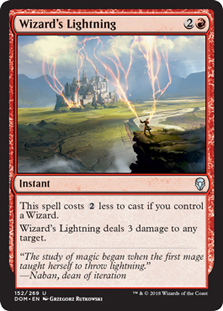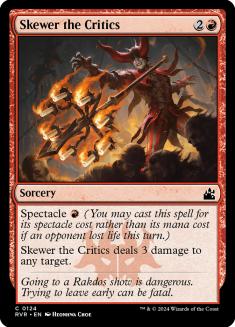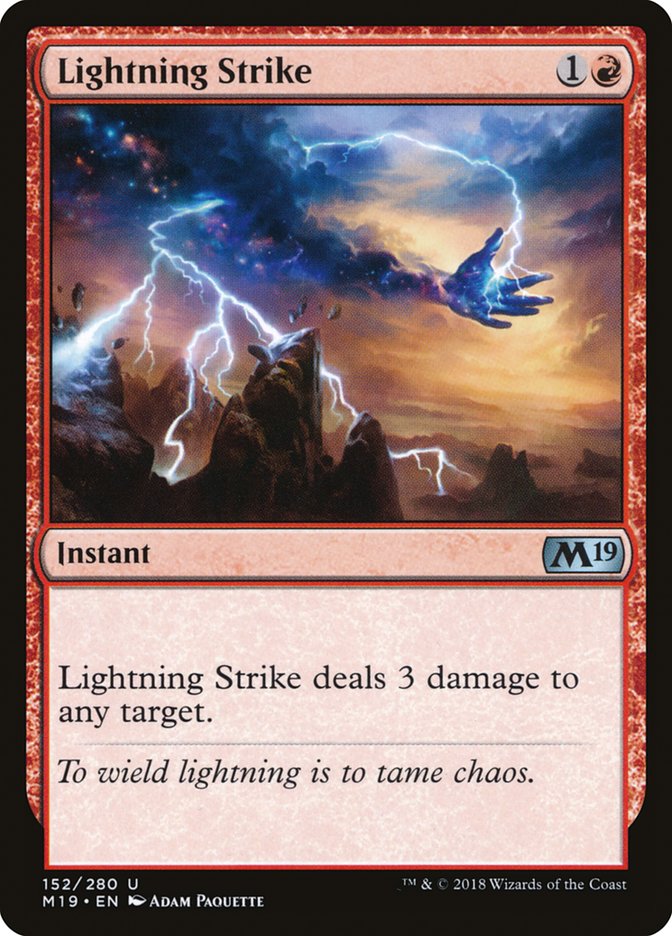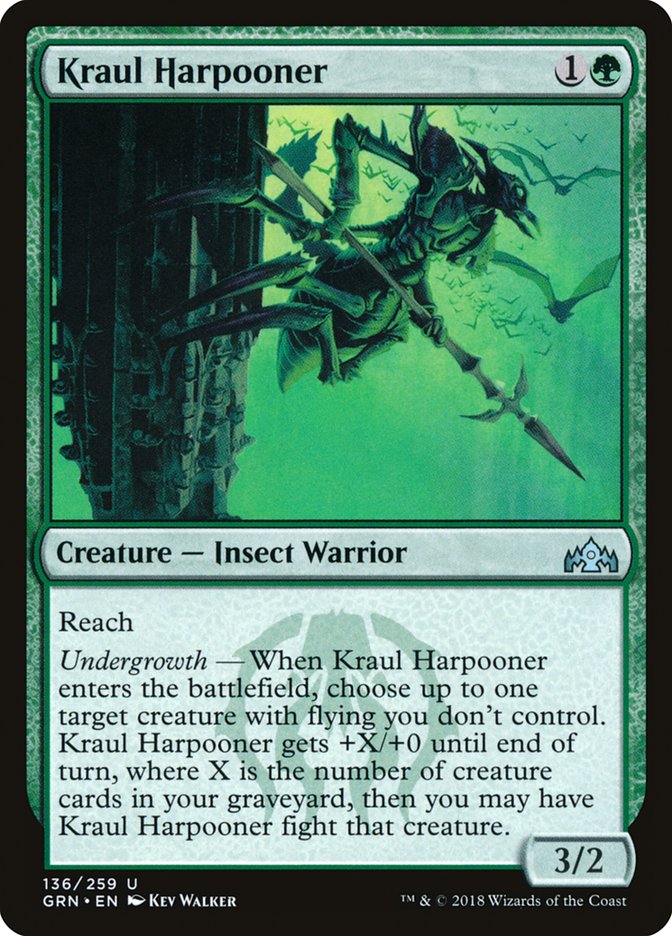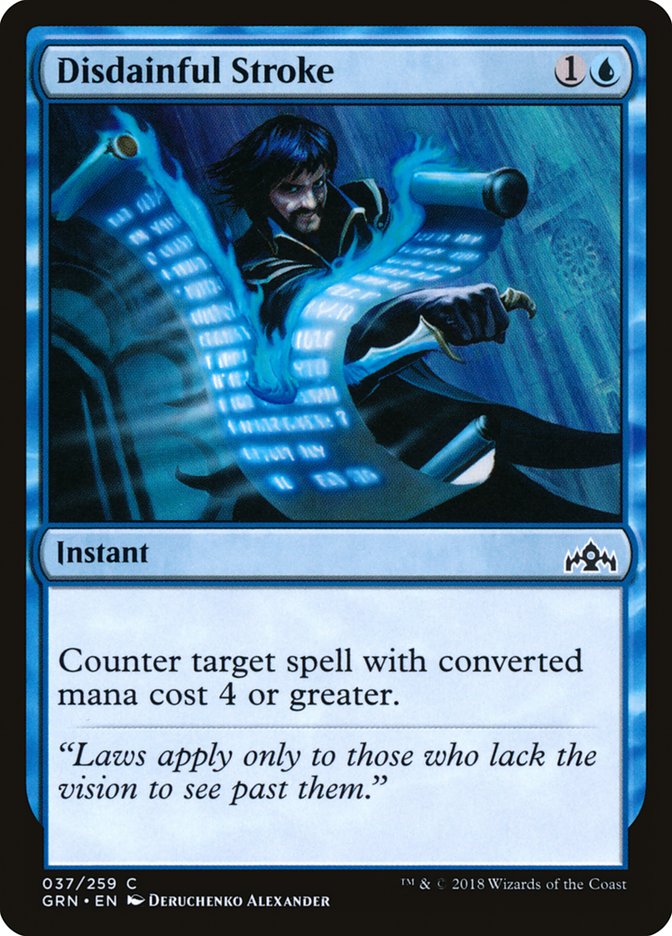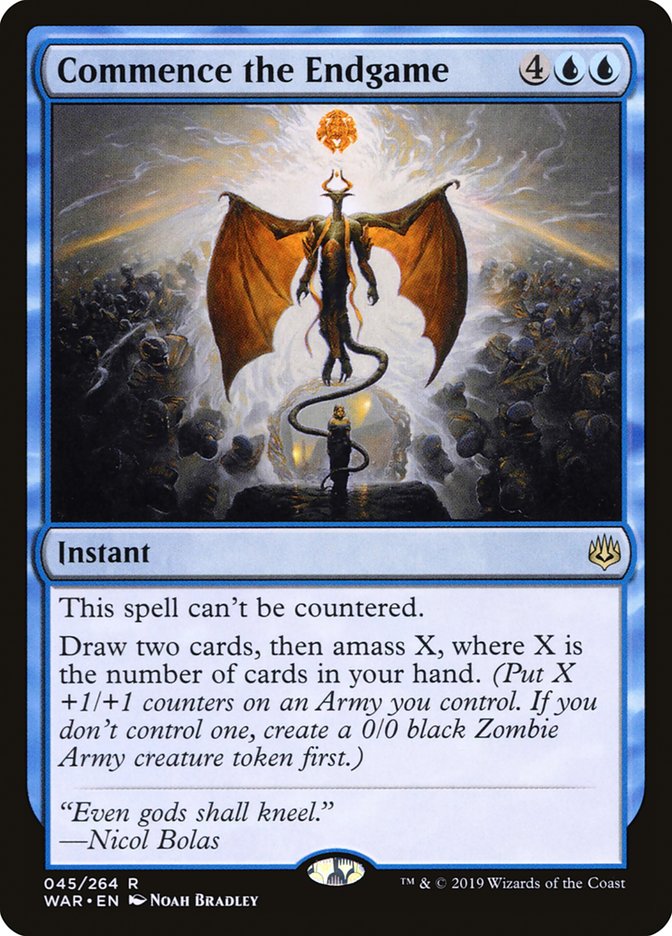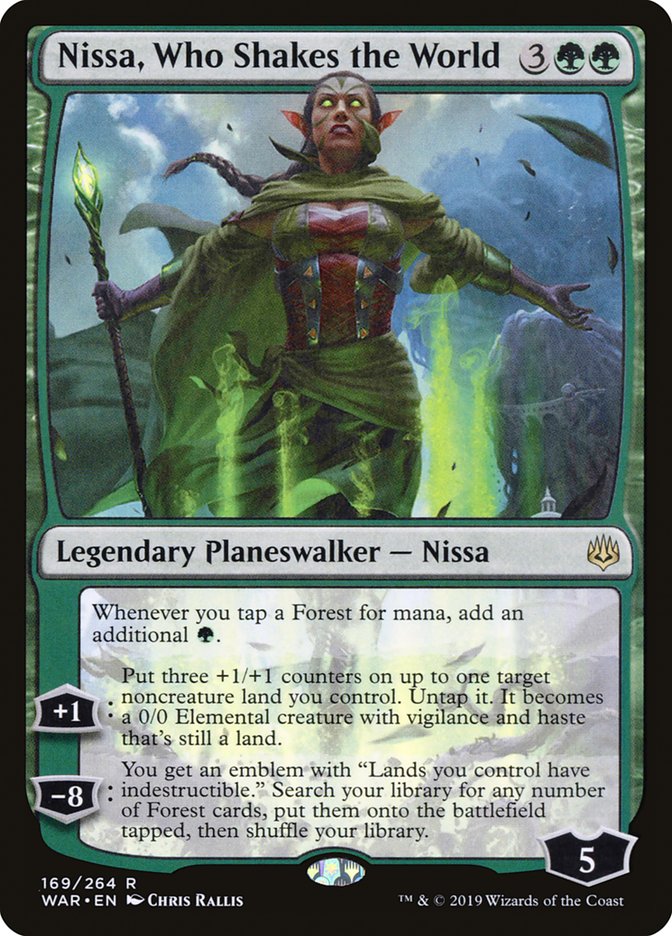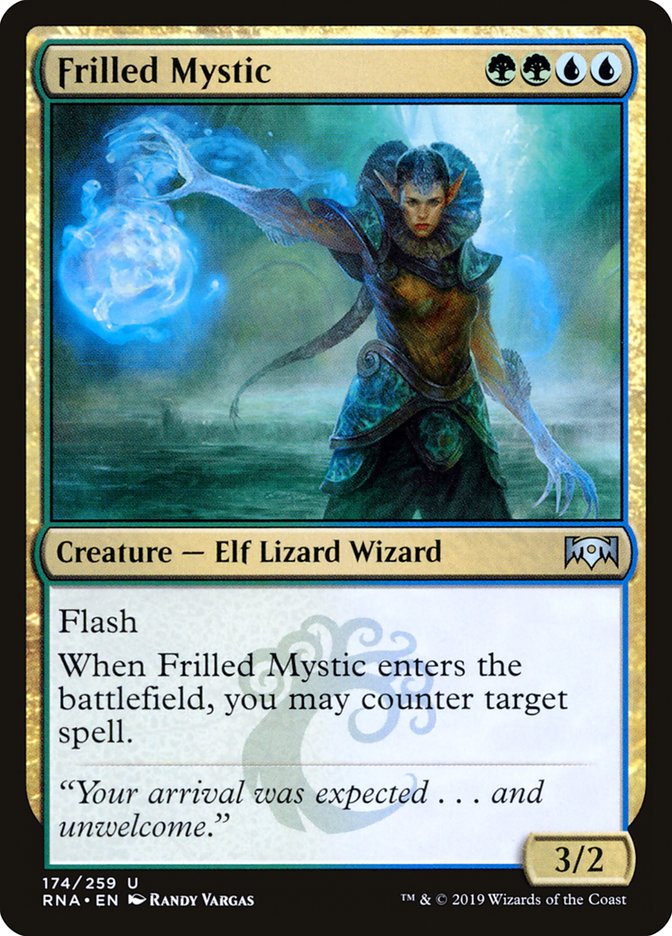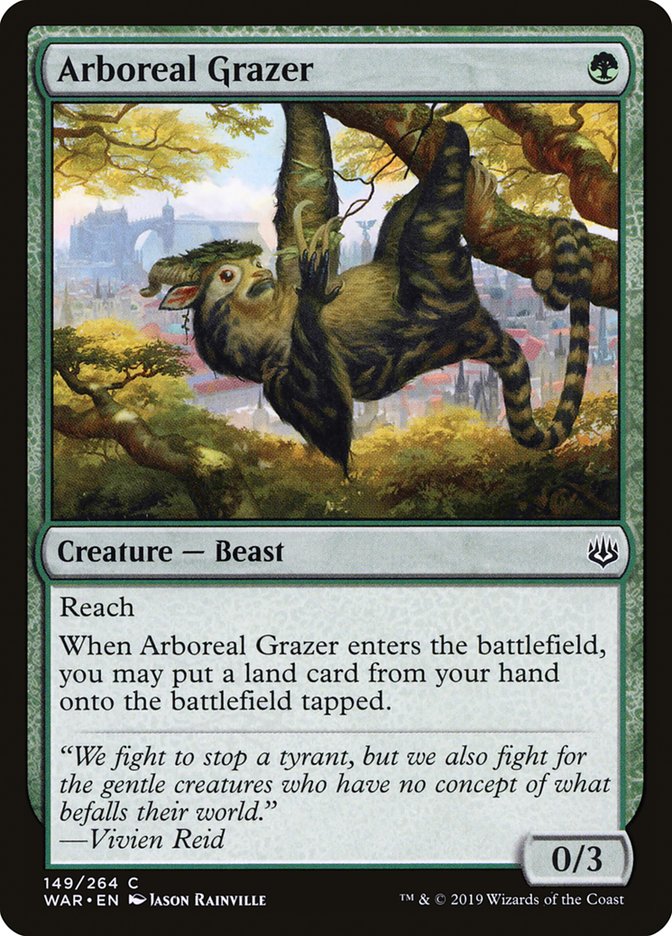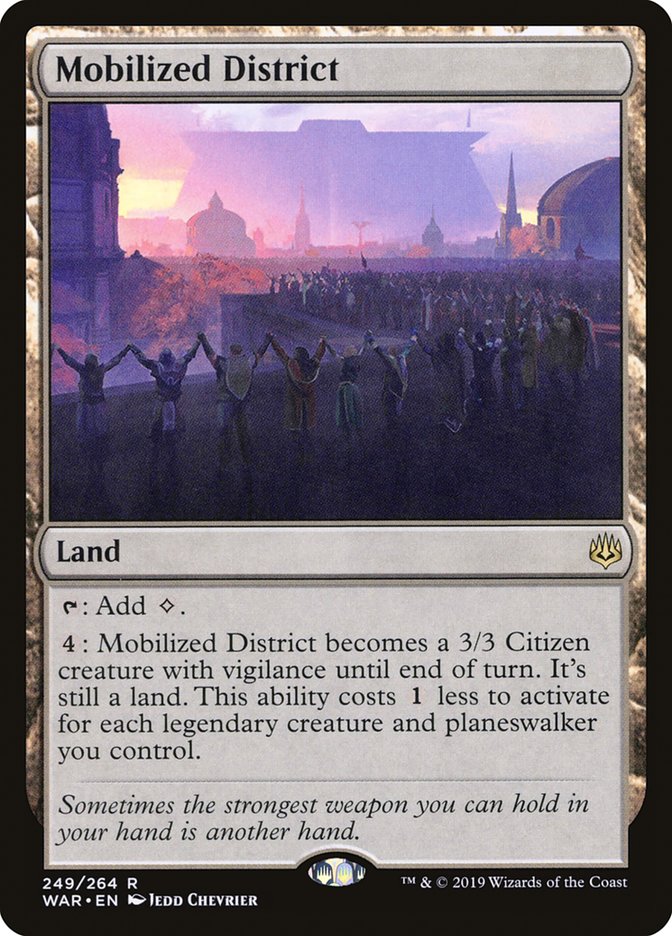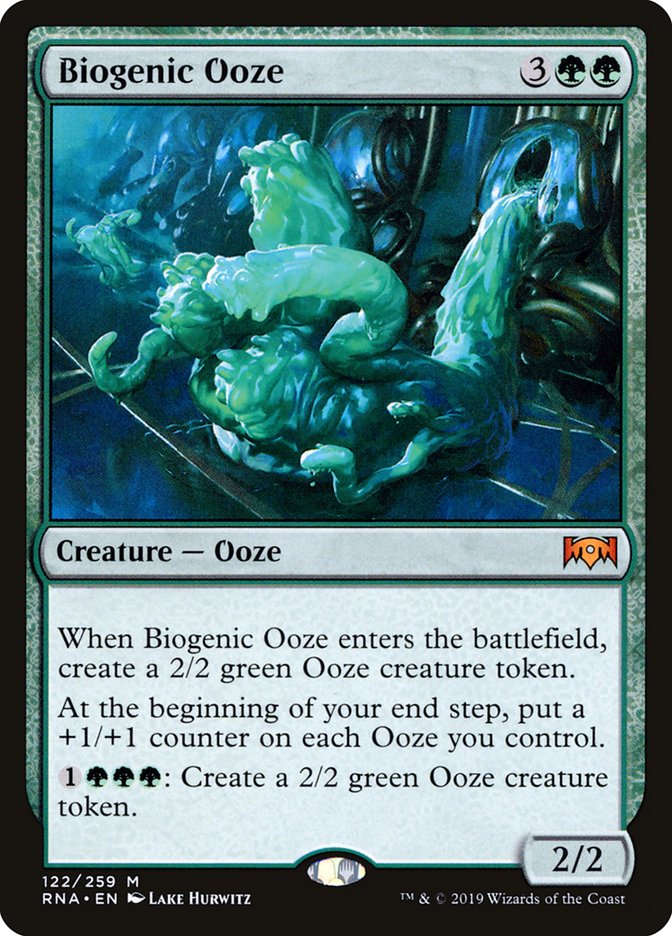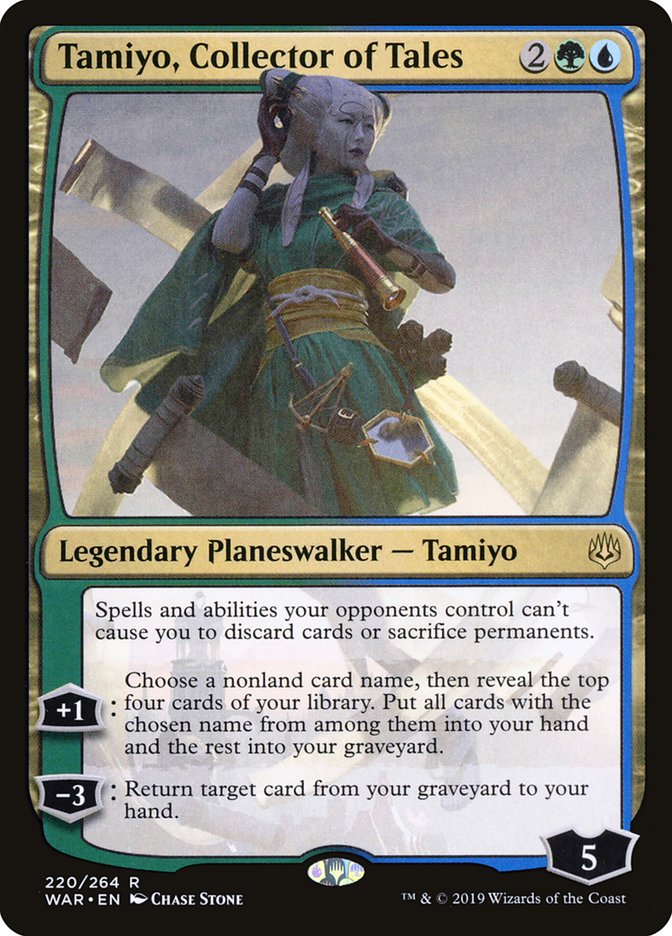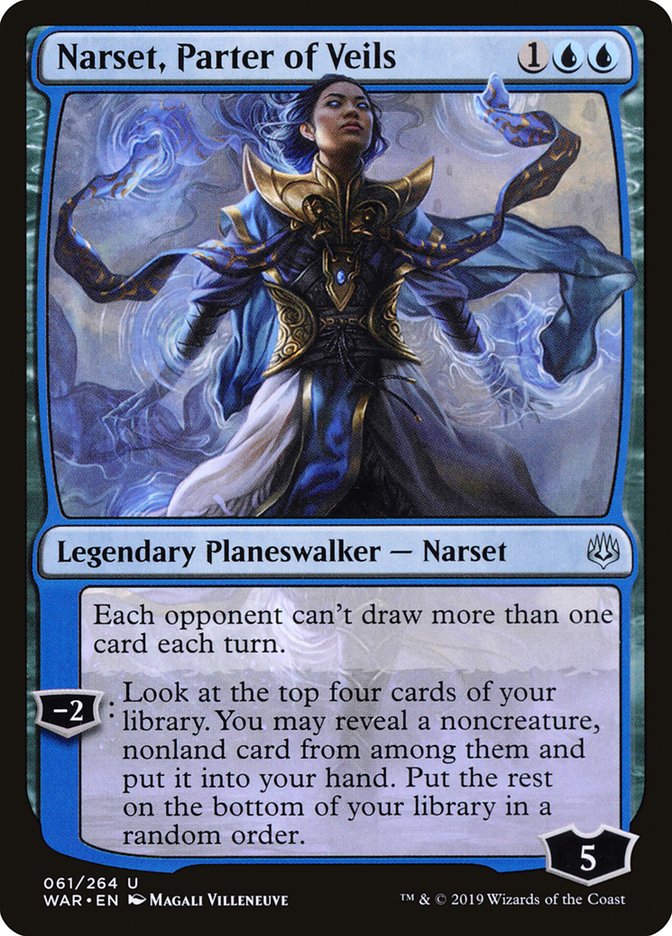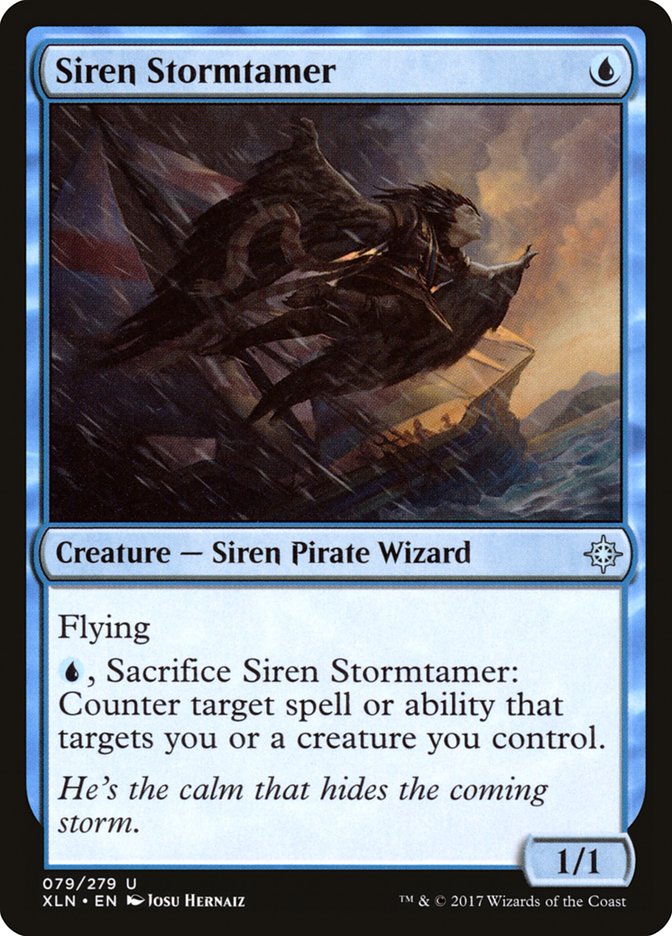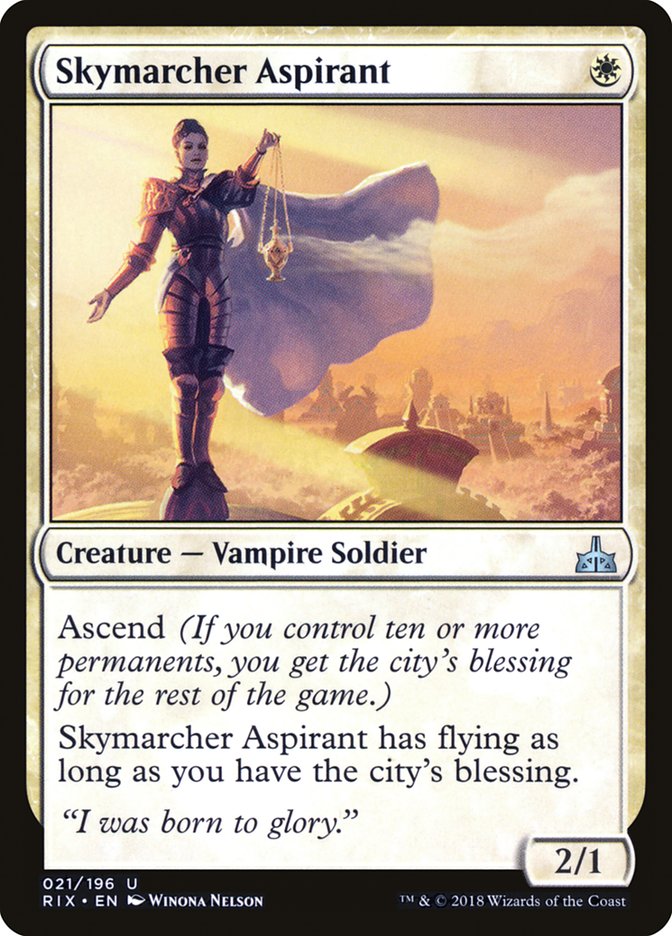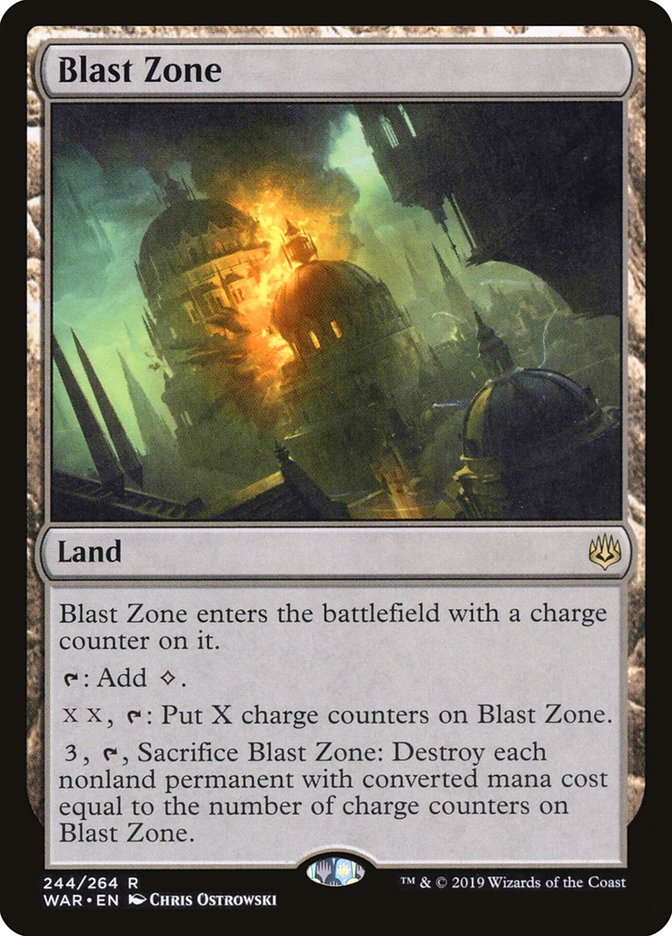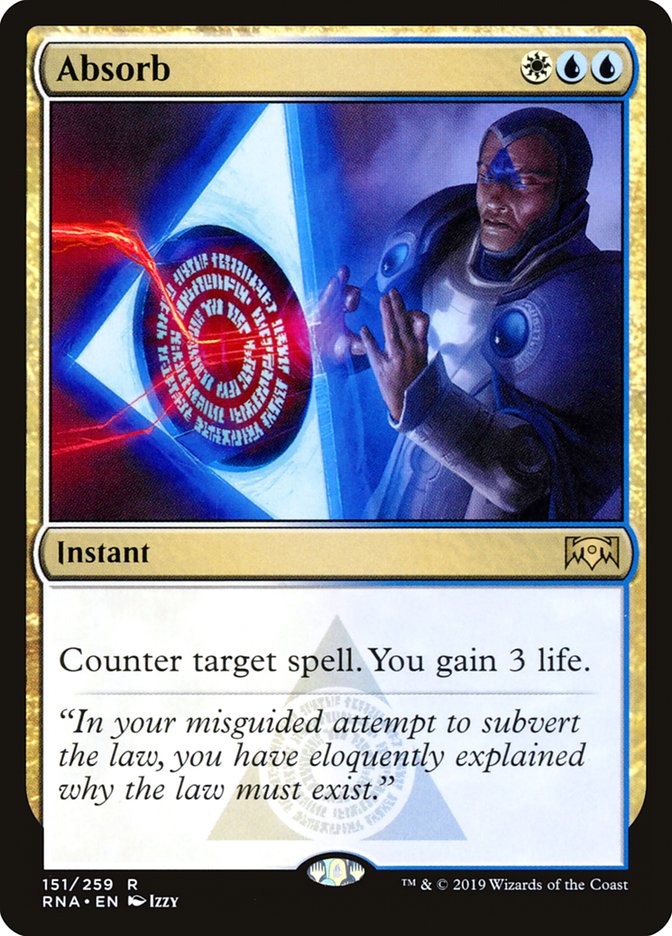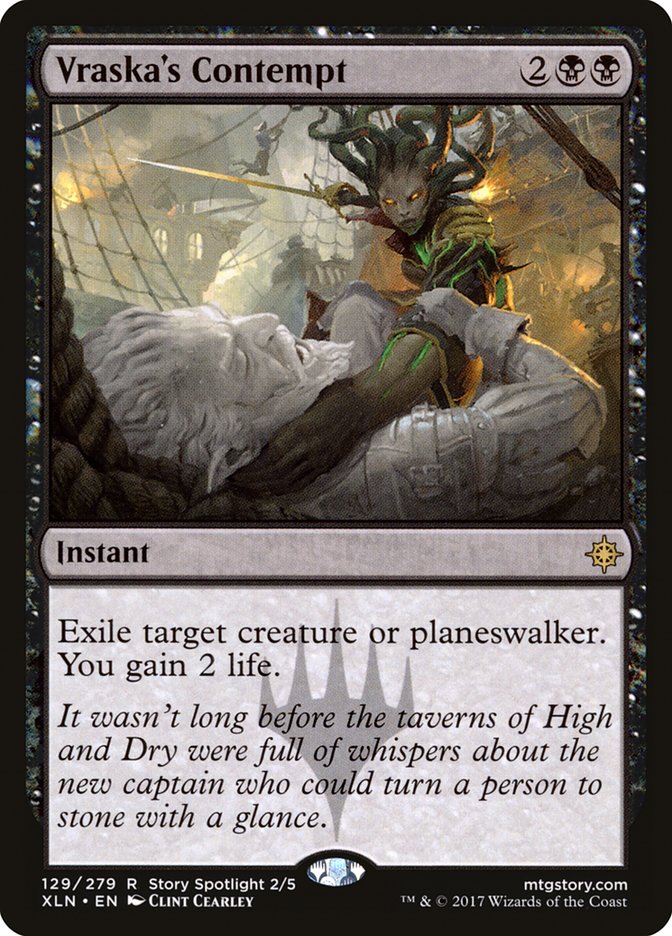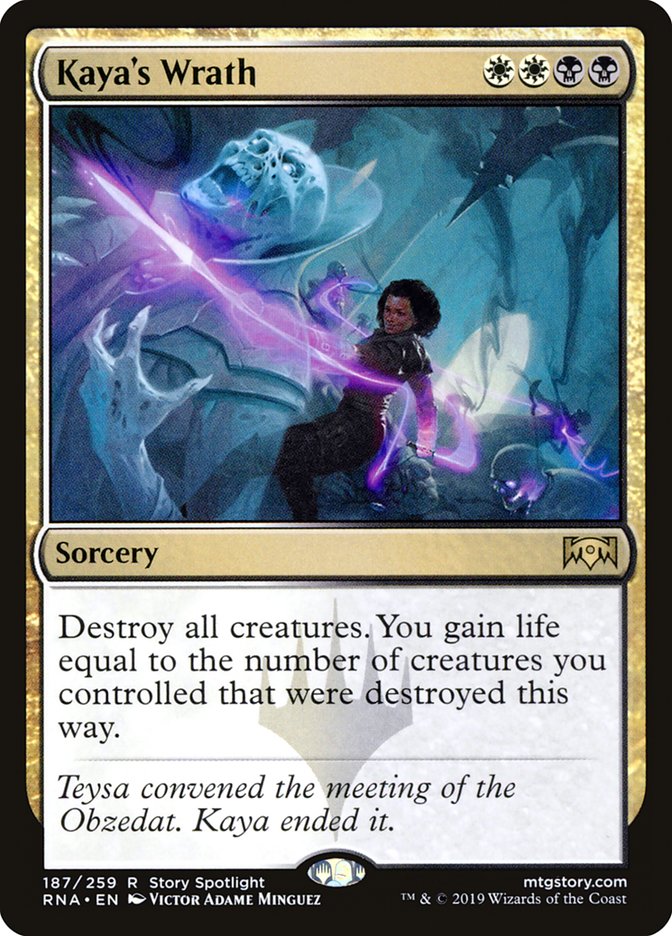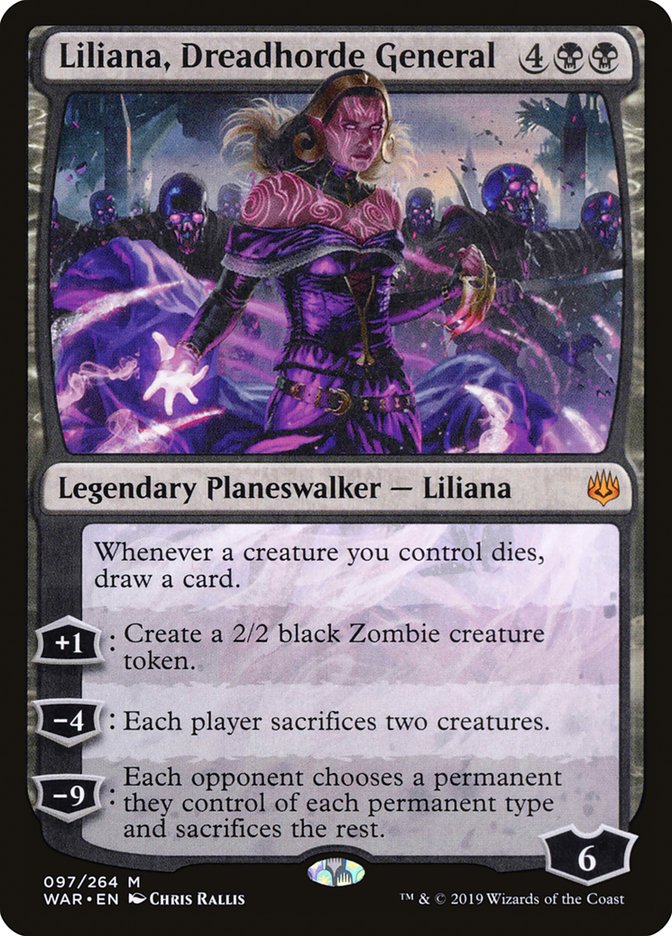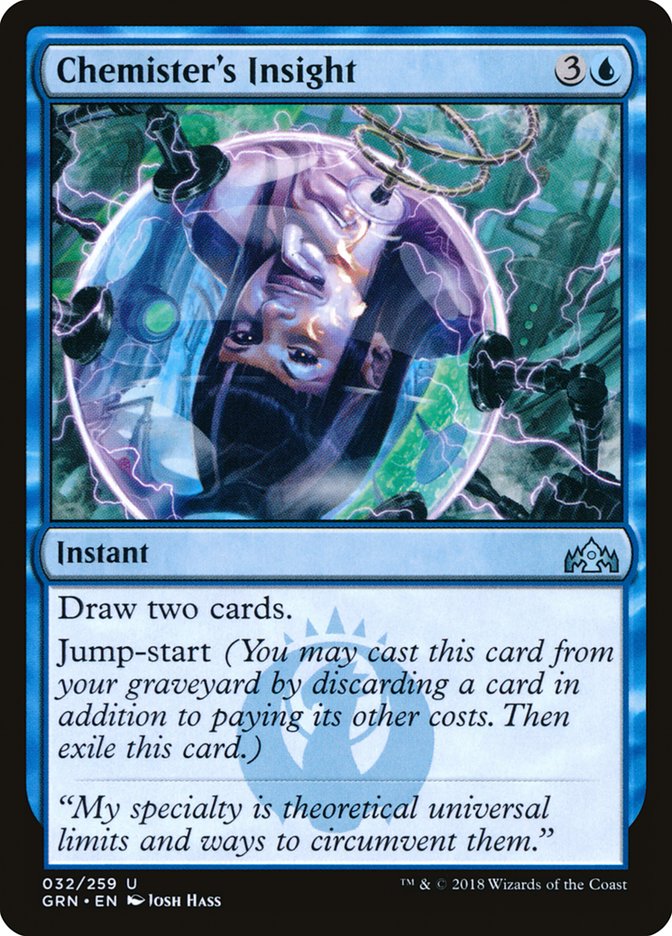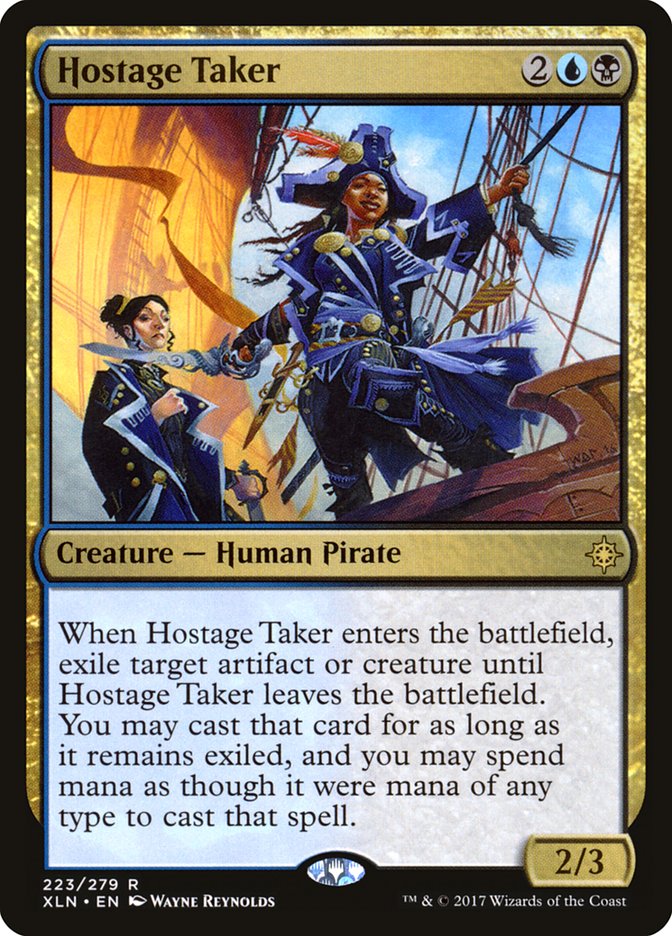War of the Spark hasn’t yet brought a bunch of new Standard decks with it, but it shoved the metagame hard in new directions at SCG Richmond.
Starting with the dominant winner, what did we learn about where the format is heading?
Red Flex Slots and Fallout
Creatures (20)
- 4 Fanatical Firebrand
- 4 Ghitu Lavarunner
- 4 Goblin Chainwhirler
- 4 Viashino Pyromancer
- 4 Runaway Steam-Kin
Planeswalkers (4)
Lands (20)
- 20 Mountain
Spells (16)

1) I would like more twitter followers.
2) This deck is still busted.@arenadecklists pic.twitter.com/qKHxHZIaTV— lewk (@lucasfaley) April 9, 2019
While War of the Spark previews spent a month in the forefront, the big development of Ravnica Allegiance Standard was Mono-Red Aggro becoming hyper-linear. The deck continued on in War of the Spark Standard and crushed the top tables of SCG Richmond with very few new additions.
The big addition everyone seems to agree on is Legion Warboss. The card is outstanding against Esper Control as a standalone threat, Simic Nexus as a fast solo clock, and somehow the mirror as a fairly easy two-for-one. The minor concurrence is Tibalt, Rakish Instigator, which is basically a Red Deck rule of “lifegain prevention is worse than more spells, unless it does more.” Making two Devil tokens is technically more.
There isn’t a consensus on whether to trim lands. Alex Majlaton was all the way at 21 land at Mythic Championship Cleveland, and now people are all the way down towards eighteen. That’s in the range of an extra half-spell a game, but over a third of your games you can’t cast Goblin Chainwhirler on Turn 3. By comparison, that’s about how often the 21-land list misses its fourth land drop.
With that context, we can talk about the four-drop decision of nothing; Chandra, Fire Artisan; or Experimental Frenzy.
Risk Factor is not a draw engine in this discussion. It’s a flashback burn spell designed to punish matchups that are playing behind on tempo but trying to catch up with more expensive answers.
The argument for nothing is the previously mentioned half a spell, but also that the four-drop is just as blank as an extra land until about Turn 5. The scariest Mono-Red Aggro games are when the deck just curves out, and extra castable spells are essential to this. The problem I have is that your two bonus slots are used on mediocre burn, not anything structural. You have all the same creatures as before. I want to emphasize the “mediocre” part of the burn equation, as these are all cards that baseline at three mana. Sure, you have Wizards and enable spectacle, but have you ever drawn a hand like this and realized how clunky it is after the fact?
Chandra, Fire Artisan and Experimental Frenzy play similar roles. Chandra is just a more certain finisher. It’s not like they can attack it, and it will ultimate for lethal. Experimental Frenzy has the high-variance effect that can bail you out of anything. It is worse in close scenarios where any high-impact effect will carry you home, better when your opponent is doing something incrementally better than you. Honestly, this sounds to me like Experimental Frenzy is a card that lets Mono-Red Aggro win when the deck itself isn’t good enough to win, while Chrandra is better in close matchups like the mirror. If we move towards more Gruul and Selesnya decks, I would start looking back at Frenzy, but I also might just look at new decks instead.
The other real tiebreaker: opposing answers. Are there more copies of Mortify and Vivien Reid, or are there more of Vraska’s Contempt and Prison Realm? Or, just as relevant, if there’s a decent amount of either of these, just play the eighteen-land version.
Reacting to Mono-Red Aggro is largely on the answer side, both yours and theirs. You need one-mana answers, because if Mono-Red Aggro doesn’t get ahead with a repeated damage source, their deck is way worse. You can’t be all answers or their four-drop of choice will overrun you. That includes the choice of fewer lands, all spells. You want something that bricks a bunch of their spells, likely a creature, but it has to be reasonably efficient. Again, you just need to keep them from getting in their creature chips. Finally, that creature has to hit four toughness or more, as their deck is full of ways to deal three damage.
I would place the more midrange Gruul decks as the perfect parry to the archetype. Shock plus Gruul Spellbreaker is the full package.
Why Not Gruul?
Creatures (24)
- 4 Llanowar Elves
- 4 Rekindling Phoenix
- 2 Dire Fleet Daredevil
- 3 Legion Warboss
- 4 Gruul Spellbreaker
- 4 Growth-Chamber Guardian
- 3 Paradise Druid
Planeswalkers (7)
Lands (23)
Spells (6)

Creatures (22)
- 4 Rekindling Phoenix
- 4 Dire Fleet Daredevil
- 4 Goblin Chainwhirler
- 2 Kraul Harpooner
- 4 Gruul Spellbreaker
- 4 Growth-Chamber Guardian
Planeswalkers (7)
Lands (24)
Spells (7)

Gruul Aggro was another late winner of Ravnica Allegiance Standard, but it doesn’t look like it fared as well as Mono-Red Aggro moving into new Standard. Why is that?
I want to place a lot of the blame on outdated decklists. Gruul was never an archetype that got pinned down, with a huge split between Goblin Chainwhirler, Llanowar Elves, or something in the middle through the entire last season. There are basically three cards people agree on: Growth-Chamber Guardian, Gruul Spellbreaker, and Rekindling Phoenix. The rest could be four copies, two copies, zero copies, who knows.
As a result of this unclear spectrum of lists, a lot of specific choices never really got ironed out. Compare to something like Sultai Midrange, where there are a ton of options but they all play clear roles and there aren’t another fifteen moving pieces changing how they perform to create sloppy decklists.
Kraul Harpooner showing up at all right now is the peak of this. I have no clue what role it plays in the current metagame with no Mono-Blue Aggro and tons of Shock. Jim Davis probably has it right with his Paradise Druids that bridge to a bigger threat, or as something hexproof you can throw into a red attacker before Goblin Chainwhirler lands.
Paradise Druid hits on the other issue I have with Gruul Aggro. I have no idea how it ever beats current Simic Nexus. Cindervines is not enough interaction. Patrick Sullivan also had a great rant this weekend about Cindervines against Esper Control and how it isn’t actually a card, though that matchup is a bit less bleak since all your threats have relevant protective. I’m just looking for any way I can stretch for blue or black interaction, and getting another few free sources on top of shocklands is more than enough to turn that corner.
Simic Nexus Is Good
The immediate reaction to no Simic Nexus in the Top 8 was “Nice hyped deck, people.”
A full 20% of the players who went 11-4 or better, aka the Top 8 minus one win cut, were playing Simic Nexus. Dig a little deeper.
The deck is still very real for all the reasons people stated before. It gets to play more cards that progress it towards a combo state and fewer dedicated win conditions or interactive spells thanks to Tamiyo, Collector of Tales and Blast Zone.
Compiling all the decisions the top lists made and looking at those that didn’t do so well, I feel ready to make some conclusions. From most to least certain:
All the cards that actively win a game at the cost of mana are trash. If any of them escape your sideboard, you did something wrong.
Arboreal Grazer is the sideboard truth. Yes, this is the second-highest-certainty conclusion. No, it isn’t just because I’m unsure of everything. I tried to calculate how much time this card is worth on Turn 1 against aggro and lost track. I’ll just call it a one-mana Time Stretch for now and assume I’ve dropped a bit to rounding errors.
The best win condition isn’t Callous Dismissal. It’s Mobilized District. Making mana and playing more lands is better than downgrading your already worst interactive spell. You can still infinitely loop a Blink of an Eye with Tamiyo, Collector of Tales and kill them with a 3/3 vigilant land through blockers. My one warning is that I haven’t gone through all the things that might exile one 3/3 through a counterspell, so there may be something that forces a second win condition. That card might just be a second Mobilized District.
Please play Mobilized District as a 26th land. Blast Zone isn’t totally free, as it costs you an actual land to use. Plus, more lands form a combo with Arboreal Grazer and Growth Spiral, two of your best cards.
The only playable creature besides Arboreal Grazer is Biogenic Ooze. It’s the only sideboard threat with the overlap of immediate on-time impact, answer resilience, and cascading value. Hydroid Krasis lacks the first, God Eternal Kefnet lacks a bit of all three, and other weird cards like Murmuring Mystic start lacking in multiple categories as well.
The fourth Tamiyo, Collector of Tales is overkill and you should split to a Narset, Parter of Veils. This is the one I’m least sure of, but your deck is already a ball of four-drops. You want cheaper spells to actually curve out with, and a handful of uncastable duplicate planeswalkers is not how you combo out or survive.
Fewer CCC Options
Both blue and white aggressive strategies were top-tier contenders in Ravnica Allegiance Standard, somehow making the full shockland format almost more about monocolored strategies. What happened to them last weekend?
Hello and good luck.
The Esper Answer Conundrum
Planeswalkers (7)
Lands (26)
Spells (27)

Yup, Esper Control is still here and stuff. Some quick hits.
Zach Allen had full sets of these answers, but if we learned anything about Esper Control from Ravnica Allegiance Standard, it was that the best Esper Control deck is a bunch of three-ofs. You don’t want multiples of anything, just a curve of unique answers into Teferi, Hero of Dominaria. Duplicates are exploitable when you miss a beat. The only exceptions are Thought Erasure, still the best answer in the format, and Teferi, Hero of Dominaria, still the best threat in the format.
The previously mentioned drop off in non-red aggro definitely means you can cut Cry of the Carnarium, but I’m closer to wanting to cut the third Kaya’s Wrath than add another sweeper at this point due to Liliana, Dreadhorde General.
Liliana is hard to justify multiples of as a six-drop, but having a sweeper that isn’t just a sweeper is such a huge upgrade in that slot. When you drew too many Kaya’s Wraths, even in a midrange matchup, it was a clunky sorcery that you were hoping to get anything more than the minimum from. Liliana, Dreadhorde General is a card you are happy to have in all of those scenarios because it just wins the game instead.
Similar to Cry of the Carnarium, Kaya, Orzhov Usurper is old news. Try Oath of Kaya instead.
Chemister’s Insight does exactly two things well: crush Duress, and help you hit your fifth land drop. If you ever play your fourth copy of it over a Narset, Parter of Veils, you made a mistake, and the third Insight might even just be a bad idea now.
Narset is also a mile ahead of Teferi, Time Raveler, just like Dig Through Time is a better card than Repulse.
Hostage Taker may have been debatable this weekend, but next weekend I wouldn’t leave home without it. Why?
The Next Midrange Wave
So there’s a clear target on the top of the format: Mono-Red Aggro, Simic Nexus, and Esper Control.
There’s a clear answer from the start of Ravnica Allegiance Standard: blue midrange. I already outlined the argument for Gruul-based Temur, but SCG Richmond brought us three other options.
Creatures (29)
- 4 Llanowar Elves
- 2 Shalai, Voice of Plenty
- 2 Knight of Autumn
- 2 Deputy of Detention
- 4 Hydroid Krasis
- 4 Growth-Chamber Guardian
- 4 Frilled Mystic
- 4 Incubation Druid
- 3 God-Eternal Oketra
Planeswalkers (7)
Lands (24)

Bant Midrange is the most promising contender against the top-tier blue decks, but I have no clue how this deck beats Mono-Red Aggro. Its one- and two-drops are too sparse and too vulnerable. There are no sure exchanges, so any of their creature draws will crush you.
I think the takeaway from this deck is that God-Eternal Oketra is as good as promised as a midrange mirror breaker. It plus Hydroid Krasis is a nice squeeze in a midrange future, with Oketra crushing green midrange and Krasis crushing more removal-based decks and both just being good anyways in the opposite lineup.
I wouldn’t Bant Midrange next week, but keep it in mind for a week or two from now. Or at least show some self-respect and add the Wildgrowth Walker package to this deck over some of these three-drop planeswalkers.
On a related note, I have no idea how Zach Kiihne keeps winning with Selesnya Tokens. I would not advise playing that deck against any of the three top decks I listed.
Creatures (11)
Planeswalkers (9)
- 3 Teferi, Hero of Dominaria
- 2 Liliana, Dreadhorde General
- 3 Teferi, Time Raveler
- 1 Sorin, Vengeful Bloodlord
Lands (26)
Spells (14)

Esper Midrange is not a deck I structurally like against Mono-Red Aggro, given the total lack of one-drop answers and cheap stopping bodies. But it seems like the best home for Enter the God-Eternals, so you can at least make it fine against Mono-Red Aggro.
The card it’s weird to not see in Brian’s deck is Tyrant’s Scorn. I don’t want a ton, but you have high-value creatures to loosely protect and recycling Hostage Taker matters even when Smother isn’t good. The card I’m glad we can now admit should have never been in our deck is Discovery. Two mana, literally do nothing, and the only time I’ve ever been happy to cast Discovery in Standard involves the first happy scenario of controlling Goblin Electromancer.
Sadly, I think Tamiyo, Collector of Tales bricks Davriel, Rogue Shadowmage as a good sideboard option. I also don’t understand the massive love everyone has for Teferi, Time Raveler. No one ever played Crashing Tide or Arrester’s Admonition, so is splicing one of those onto an anti-Wilderness Reclamation hate card really enough to make it playable as a three-of? Trim that one and get another proactive card or two in your deck. Conveniently, we just opened up a sideboard slot or two for exactly that effect!
I have doubts about Esper Midrange not just folding to Esper Control due to their higher raw card power, but I think that’s solidly the third-place concern. With reasonable shots against Simic Nexus and Mono-Red Aggro, I would be looking at Esper Midrange for SCG Syracuse in two weeks.
Creatures (4)
Planeswalkers (9)
- 2 Liliana, Dreadhorde General
- 4 Nicol Bolas, Dragon-God
- 2 Narset, Parter of Veils
- 1 Ugin, the Ineffable
Lands (25)
Spells (22)

The deck that might be the most targeted answer to all of this is Grixis Midrange, via the Standard Classic at SCG Richmond. There’s a lot I dislike about these matching first- and third-place lists, but the archetype showed promise even before Nicol Bolas, Dragon-God.
The list of what is wrong: I’ve been fooled by Nicol Bolas, the Ravager too many times when I could just play Hostage Taker or Rekindling Phoenix or just God-Eternal Kefnet now. This deck somehow tricked itself into playing Discovery instead of real cards. There is no way these two-mana removal spells are right, namely Bedeck over things that cost one or kill more expensive creatures too. Are we waiting to kill Azcanta, the Sunken Ruin?
Actually, that’s it, besides the whole Thought Erasure being a 0/0 versus Merfolk Branchwalker being a 3/2 problem I’m sure we will have to address at a later date.
The good: Unmoored Ego; Legion Warboss backed by discard; Liliana, Dreadhorde General; and Enter the God-Eternals are all insanely powerful breakers for the top contenders. Esper Midrange has a lot of these cards too, but Nicol Bolas, Dragon-God is way better than Teferi, Hero of Dominaria in your deck with zero counterspells. I think the only things white offers now are Disenchants and Hero of Precinct One, but with Experimental Frenzy and Azorius Aggro on the downswing, I think I would have Grixis slightly ahead of Esper in my midrange power rankings.
All signs point towards playing a not-just-Dimir Dimir deck after SCG Richmond. My big question for SCG Syracuse is whether the metagame ticks once more before then and leaves this all a step behind. Early Standard moves swiftly; don’t be afraid to admit it has passed you by as swiftly as it got to this state.


